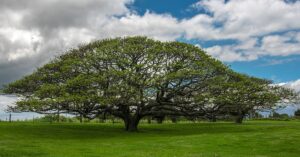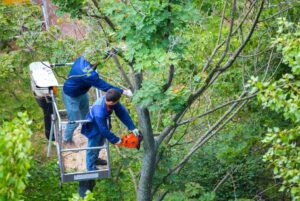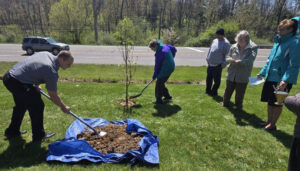Tree Removal for Landscaping: A Comprehensive Guide
Tree removal is often an essential part of landscaping, whether it’s to clear space for new construction, improve aesthetic appeal, or address safety concerns. However, it’s not just about cutting down a tree; it involves careful planning, knowledge of the tree’s health and structure, and consideration of environmental factors. This guide will explore everything you need to know about tree removal for landscaping, providing you with detailed insights and actionable steps to ensure a successful and safe process.
1. Importance of Tree Removal in Landscaping
Tree removal plays a crucial role in landscaping for various reasons. While trees add beauty, shade, and ecological benefits, there are times when their removal is necessary to achieve the desired landscape design or to protect property.
Reasons for Tree Removal in Landscaping:
- Space Optimization: Trees can occupy valuable space that could be used for lawns, gardens, or other landscape features.
- Improving Aesthetics: Removing old, diseased, or unsightly trees can enhance the overall appearance of the landscape.
- Preventing Property Damage: Trees with weak branches or shallow roots can pose risks to buildings, driveways, and other structures.
- Managing Tree Health: Sometimes, removing one tree can improve the health of others by reducing overcrowding and competition for resources.
Benefits of Tree Removal:
- Increases property value by enhancing curb appeal.
- Reduces maintenance efforts associated with leaf litter, falling branches, or root invasions.
- Creates opportunities for new plantings and landscape designs.
Table: Pros and Cons of Tree Removal in Landscaping
| Aspect | Pros | Cons |
|---|---|---|
| Space Optimization | Frees up space for new features | Loss of shade and natural cooling |
| Aesthetic Improvement | Enhances landscape appearance | Loss of mature trees can affect biodiversity |
| Safety | Reduces risk of damage from falling trees | Potentially costly and labor-intensive |
| Tree Health Management | Improves health of remaining trees | Requires professional assessment |
2. Assessing Trees for Removal
Before removing a tree, it’s important to assess whether it truly needs to be removed or if alternative solutions exist. A proper assessment involves evaluating the tree’s health, location, and potential impact on the surrounding landscape.
Factors to Consider:
- Tree Health: Look for signs of disease, such as fungus growth, dead branches, or trunk damage. A professional arborist can provide a detailed health assessment.
- Structural Integrity: Check for visible lean, cracks in the trunk, or root problems that may compromise the tree’s stability.
- Impact on Surroundings: Consider how the tree affects nearby plants, structures, and utilities. Trees with invasive root systems or those too close to buildings may need removal.
- Aesthetic and Functional Needs: Evaluate whether the tree fits within your landscape vision. Sometimes pruning or reshaping is enough to retain the tree while meeting landscaping goals.
Assessment Tips:
- Conduct a visual inspection from different angles and distances.
- Use tools like a mallet to check for hollow areas in the trunk.
- Engage a certified arborist for a comprehensive evaluation and advice.
3. Planning and Preparing for Tree Removal
Planning is a critical step in the tree removal process. Proper preparation helps ensure that the removal is conducted safely, efficiently, and with minimal disruption to your landscape.
Steps in Planning Tree Removal:
- Obtain Permits: Check with local authorities for any permits required for tree removal. Some areas have strict regulations, especially for protected or large trees.
- Mark the Work Area: Clearly mark the area around the tree to prevent accidental entry and ensure safety for workers and bystanders.
- Notify Neighbors: If the tree is near property lines or might affect your neighbors, inform them in advance to maintain good relations.
- Plan for Disposal: Decide how you will handle the tree’s remnants—whether through hauling away, chipping for mulch, or repurposing the wood.
Preparation Checklist:
- Ensure all necessary permits are acquired.
- Arrange for professional tree removal services if the tree is large or hazardous.
- Identify and clear obstacles around the tree, including moving vehicles and furniture.
- Prepare safety equipment and tools needed for the job.
4. Tree Removal Techniques
Different tree removal techniques are used depending on the tree’s size, location, and condition. Understanding these methods can help you choose the best approach for your landscaping needs.
Common Tree Removal Techniques:
- Felling: This involves cutting the tree at the base and allowing it to fall in a predetermined direction. It’s suitable for trees in open spaces with ample room for the tree to fall safely.
- Sectional Dismantling: When space is limited, trees are cut down in sections from the top down. This method often requires climbing or using a crane.
- Crane-Assisted Removal: For very large or dangerous trees, cranes can lift and remove sections safely. This method minimizes impact on the surrounding landscape.
- Stump Grinding: After the tree is cut down, the stump is ground down to below the soil level, making it easier to replant or landscape over the area.
Comparison Table: Tree Removal Techniques
| Technique | Best For | Pros | Cons |
|---|---|---|---|
| Felling | Open spaces, small trees | Quick and simple | Requires large clear area |
| Sectional Dismantling | Tight spaces, near structures | Safe for confined areas | Labor-intensive, requires expertise |
| Crane-Assisted | Large, hazardous trees | Minimizes damage to surroundings | Expensive, requires specialized equipment |
| Stump Grinding | Any stump | Eliminates stump, allows replanting | May leave roots, can be time-consuming |
5. Environmental Considerations in Tree Removal
Removing trees can have significant environmental impacts, so it’s important to consider these factors during the planning stage. Trees play a crucial role in maintaining ecological balance, and their removal should be justified and managed responsibly.
Environmental Impacts:
- Loss of Habitat: Trees provide habitat for birds, insects, and other wildlife. Consider the impact on local biodiversity.
- Soil Erosion: Tree roots help stabilize the soil. Removing trees can lead to increased erosion, especially on slopes.
- Carbon Sequestration: Trees absorb carbon dioxide, helping mitigate climate change. Their removal reduces this benefit.
Mitigation Strategies:
- Replanting: Replace removed trees with new ones elsewhere in your landscape to maintain ecological balance.
- Selective Pruning: Instead of full removal, consider pruning to manage the tree’s size and shape while retaining its environmental benefits.
- Wood Utilization: Repurpose the wood for furniture, firewood, or mulch to minimize waste.
Bullet Points for Sustainable Tree Removal:
- Choose tree removal only when absolutely necessary.
- Opt for species that are native and suited to the local environment for replanting.
- Consult with environmental specialists to understand the full impact of tree removal.
6. Costs and Budgeting for Tree Removal
Tree removal costs can vary significantly based on the size, location, and complexity of the job. Understanding the factors that influence costs can help you budget effectively for your landscaping project.
Cost Factors:
- Tree Size: Larger trees require more time, equipment, and expertise, increasing the overall cost.
- Location: Trees near structures, power lines, or in hard-to-access areas may require specialized removal techniques, driving up costs.
- Stump Removal: Including stump grinding or removal adds to the total expense.
- Permits and Inspections: Regulatory fees for permits and inspections can also impact your budget.
Average Cost Breakdown:
- Small Trees (up to 30 feet): $150 – $500
- Medium Trees (30-60 feet): $500 – $1,000
- Large Trees (over 60 feet): $1,000 – $2,000
- Stump Grinding: $100 – $400 depending on size
Table: Tree Removal Cost Comparison
| Tree Size | Typical Cost Range | Factors Influencing Cost |
|---|---|---|
| Small (up to 30 ft) | $150 – $500 | Simple felling, no obstacles |
| Medium (30-60 ft) | $500 – $1,000 | May require sectional dismantling |
| Large (over 60 ft) | $1,000 – $2,000 | Likely needs crane assistance, complex removal |
| Stump Grinding | $100 – $400 | Size and accessibility of stump |
7. Post-Removal Landscaping Ideas
Once the tree has been removed, you have a blank canvas to enhance your landscape. The space created can be used for various landscaping features that add beauty and functionality to your outdoor area.
Ideas for Post-Removal Landscaping:
- Lawn Expansion: Extend your lawn area to create more open space for recreation.
- Garden Beds: Use the space for flower beds, vegetable gardens, or decorative shrubs.
- Patios and Hardscaping: Install patios, walkways, or other hardscaping elements to enhance usability.
- Water Features: Consider adding a pond, fountain, or other water features to elevate the landscape design.
Tips for Enhancing the Area:
- Use the opportunity to incorporate drought-tolerant or native plants to reduce maintenance and water usage.
- Install lighting or seating to create functional and inviting outdoor spaces.
- Add mulch or ground cover where the tree stood to improve soil health and prevent erosion.
Sustainability Tip:
Reusing the tree’s wood in your landscape, such as creating garden borders, benches, or mulch, adds a natural touch and promotes sustainability.
Conclusion
Tree removal for landscaping is a complex process that requires careful planning, consideration of environmental impacts, and understanding of various removal techniques. By assessing your trees thoroughly, planning for safe removal, and exploring creative landscaping options afterward, you can transform your outdoor space while maintaining environmental responsibility. Always consult professionals when necessary, especially for large or hazardous tree removals, to ensure safety and efficiency. Whether you’re enhancing aesthetics, creating more usable space, or improving property safety, the steps outlined in this guide will help you navigate the process successfully.



